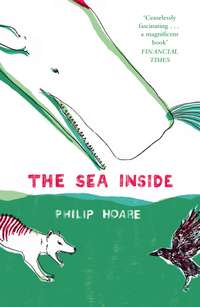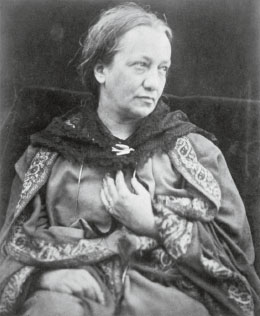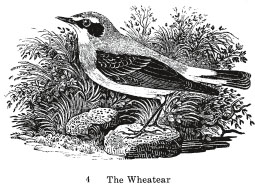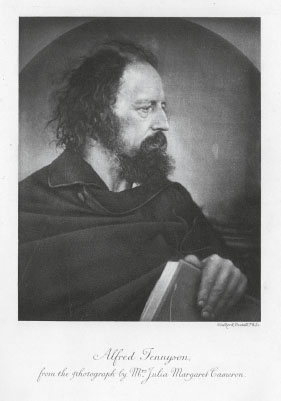
The Sea Inside
I’m warming my hands on my flask of tea and thinking about leaving when the German students arrive. One of them leaps onto the promenade railing and, in an acrobatic defiance of gravity, holds his body vertically for a split-second, supporting himself on one hand. Another changes into brash shorts and black goggles and strides into the water. He swims straight ahead, disregarding the weedy rocks. Having reached his appointed end – his route might as well have been marked out in the lanes of a public pool – he swims back to his friends’ applause.
After these breezy exertions the students pack up and go. Emboldened, I plunge back in, following the channel the boy had pioneered. As I swim, still wary of the rocks, a black-painted ketch sails into the cove and straight at me. Its crew comprises a long-haired man – perhaps one of those useful locals recommended by my guide – and a younger woman who leans over the side and shouts at me, ‘Are you mad?’
Back on the beach, she produces a blue plastic bucket. Inside is a slithery selection of still-twitching fish: whiting, catfish, and other brown-bodied, slimy species. Warming to her audience – a man and his young son have come up to peer into the bucket – she says that the sea is two degrees warmer than it should be at this time of year, that fish are appearing which ought not to be here. I ask if they ever see any dolphins out there. She defers to her captain, who says yes, a few miles out.
‘The Common Porpoise,’ Mr Adams reassures me, ‘occasionally passes along our southern shore in small shoals.’ But even bigger cetaceans have been found here. In 1758, a Royal Navy ship captured a sixty-six-foot fin whale which had been seen floating dead in the water, only to leave go of it off the Needles, from where it washed up at what would become known as Whale Chine. It took a century for another fin whale to appear at the feet of Tennyson Down, in 1842; it ended up in the amusement park at nearby Blackgang Chine, where its enclosed bones became a kind of cavernous shopping-bazaar-cum-boatshed, lined with plates, baskets, pictures, shells and glass lighthouses filled with coloured sand from Alum Bay, while its empty jaws pointed forlornly to the window and the sea beyond. It was still there when I visited the island as a boy, although I remember being more excited by the plaster gnomes and toadstools outside.

Leaving the beach, I turn inland, passing a pair of bay-fronted villas at the foot of the downs – the sort of seaside houses that offer bed and breakfast, polyester chintz and cracked shower cubicles; but a crenellated tower and oriel windows suggest another story.
Dimbola Lodge was the home of Julia Margaret Cameron, who, swathed in purple paisley, her hands stained ‘as black as an Ethiopian Queen’s’ by silver nitrate, created alchemical images in her greenhouse, having summoned subjects spotted in the streets from her eyrie. As the name of her house suggests, she too was a migrant, an exotic bird blown onto the island’s shores.
Cameron was born in Calcutta in 1815. Her family name, Pattle – close to the Hindu ‘Patel’ – indicates an Asian ancestry, evident in her broad forehead and ‘Pondicherry eyes’, the same features seen in her great-nieces, Vanessa Bell and Virginia Woolf. Theirs was a family which looked east. Julia’s husband Charles, twenty years her senior, had fallen in love with Ceylon as a young man, and continually returned there. Their house in Freshwater was named after the family’s coffee plantation, while the subcontinent’s influence was reflected in its Indian gothic arches.
Writing from Dimbola, Julia tried to entice Charles back with her fanciful comparisons. ‘This island might equal your island now for richness of effects,’ she declared, as if West Wight had somehow magically moved to the Indian Ocean, or at least been towed there in her imagination. ‘The downs are covered with golden gorse & beneath them the blue hyacinth is so thickly opened that the valleys look as if the “sky were upbreaking thro’ the Earth” … The trees too are luxuriant here – far more flourishing than they usually are by the sea – and Alfred Tennyson’s wood may satisfy any forester.’
Here Cameron pursued her art. Her photographic images show only human faces, but they’re lit by the chalk downs and the limitless sea around them. With their shifting focus and depth, their draped shawls and tresses of hair, they resemble underwater scenes. They are worlds of their own, more organic scenes than portraits. On her way south from London, Julia would change at Brockenhurst, where her photographs of Darwin, Browning, Tennyson and others still hang in the booking hall, along with a hand-written sepia inscription:
This gallery of the great men of our age is presented for this Room by Mrs Cameron in grateful memory of this being the spot where she first met one of her sons after a long absence (of four years) in Ceylon. 11th of November 1871.
She must have made for a lively travelling companion. Henry Allingham encountered her at the station, ‘queenly in a carriage by herself surrounded by photographs … talking all the time. “I want to do a large photograph of Tennyson, and he objects! Says I make bags under his eyes – and Carlyle refuses to give me a sitting, he says it’s a kind of Inferno! The greatest men of the age (with strong emphasis), Sir John Herschel, Henry Taylor, Watts, say I have immortalised them – and these other men object!! What is one to do – Hm?’ (Her conversation was constantly punctuated with ‘eh?’ and ‘hm?’).

Julia presided over an unlikely irruption of bohemianism on this islet. ‘Everybody is either a genius or a painter or peculiar in some way,’ complained one visitor, ‘is there nobody commonplace?’ With its perpetual parties and play-acting, Freshwater was one long performance, and Dimbola its proscenium arch. Such was the throng of art and letters that one writer compared it ‘to Athens in the time of Pericles, as being the place to which all the famous men of the reign of Queen Victoria gravitated’; another considered its society closer to a French salon than any English gathering.
It’s hard to imagine now that this sleepy village should have been filled with such fanciful displays. Leaving Dimbola and its eccentric cast behind, I push my bike up the hill – and nearly blunder into a skylark at my feet. Ahead of me, the island rises, ‘walled up from the ocean by a bulwark of immense cliffs’, as Adams writes, caught up in the spirit of the sublime. ‘A mighty barrier, truly! but yet not altogether impregnable against the assaults of the sea. Their glittering sides are strangely branded, as it were, by dark parallel lines of flint, that score the surface of the rock from misty ridge to spray-beaten base. Huge caverns penetrate into their recesses. Isolated rocks frown all apart in gloomy grandeur. Immense chasms yawn …’
Couched in such breathless terms, the terrain takes on the air of Julia’s amateur dramatics: the celadon sea, the lime-lit cliffs, the sun switched on and off by a shifting curtain of clouds; a Victorian stage on which an over-made-up Edgar might be telling his blinded father Gloucester, ‘How fearful/And dizzy ’tis to cast one’s eyes so low!’ This is a place used and shaped by every species that visits it. The turf is as clipped as a bowling green, the work of rabbits whose burrows riddle the soft chalk. Violets and gentians stud the grass like purple stars. There’s barbarity here too, invoked by a raven perched on the edge, but it is upstaged by an altogether more diminutive bird: the wheatear, newly arrived from the other end of the earth.
I say wheatear, but that is a prudish corruption of its wonderfully common name, white arse, one which reaches back to the Old English hwīt, and ærs, its distinctive tail. Its binomial, Oenanthe oenanthe, is almost bigger than the bird itself, and derives from the Greek for wine flower, since its bearer’s arrival in southern Europe from Africa coincides with the blossoming of the vines. Weighing barely twenty-five grams, the northern wheatear accomplishes a migration among the greatest of any songbird, round trips of up to eighteen thousand miles from South Africa to Alaska. Those that land in southern England, however, choose to nest here, using abandoned burrows.
Under the cover of a hollow created by subsidence, I crawl along to get a better look. They’re exquisite birds. I focus on one male as it hops about on the precipice. Its bluish-grey back reminds me of a guardsman’s greatcoat, and its pale belly is blushed with a seductive peach tint. Its face is pharaonically masked by a black eye stripe. It stands on an outcrop of chalk, proud and alert on surprisingly long legs, the light reflecting up at its breast. As it runs along, it launches into short skittering flights, flaunting its white arse. It is loyal to the downs, a welcome resting place after all those thousands of air-miles, but a fateful choice for its predecessors, which were rewarded for their efforts by being baked in a pie.
According to Gilbert White, writing in the 1770s, wheatear (as a respectable cleric, he was bound to use the bird’s less indecorous name) were ‘esteemed an elegant dish’. ‘At the time of the wheat-harvest they begin to be taken in great numbers; are sent for sale to Brighthelmstone and Tunbridge; and appear at all the tables of the gentry that entertain with any degree of elegance.’
To supply such slender fare, shepherds left their flocks every summer – to the annoyance of their employers – setting their snares on the feast of St James, 25 July. Thomas Bewick, writing two decades after White and referring, in his no-nonsense northern text, to the White-Rump, noted that the traps were made of horse hair, and hidden beneath a piece of turf. He reckoned ‘near 2000 dozen’ were taken each year around Eastbourne alone, to be sold for sixpence a dozen in London, ‘where they are … thought not inferior to Ortolan’, a small bird which was and still is eaten in France. (A captive ortolan’s eyes were poked out; it was then force-fed oats before being drowned in brandy and swallowed beak-first, its carcase covered with a napkin to hide the shameful act from the eyes of God.) In 1825, Mrs Mary Trimmer, ‘author of Man in a Savage and Civilized State’, updated Bewick’s book, silently removing ‘White-Rump’ from its chapter heading, adding that, ‘as they are very timid birds, the motion of even a cloud … will immediately drive them into the traps’, and noting that a single shepherd could catch eighty-four dozen birds a day.
As the overfed inhabitants of the watering holes of Brighton and Tunbridge Wells, themselves as migratory as the birds, sucked and chewed one white arse after another, it is little wonder that, as the Reverend White noted, ‘About Michelmas they retire and are seen no more until March.’ White, though, had no idea where they went.

They may be scared by clouds, but wheatear are bold birds, hopping close to my feet. To Derek Jarman, walking in Dungeness where he had retreated to his tar-black Prospect Cottage, and where he gathered holy stones for friends to wear around their necks as though to protect them from the nearby nuclear reactor, ‘the snobbish wheatears complain – tch! tch!’ But Tennyson heard them differently –
The wheatears whisper to each other:
What is it they say? What do they there?
– as he pounded the island’s downs in his military cape and broad-brimmed hat and oath-catching beard.
Tennyson was born in Lincolnshire in 1809. ‘Before I could read,’ he remembered, ‘I was in the habit on a stormy day of spreading my arms to the wind, and crying out “I hear a voice that’s speaking in the wind.”’ He was a poet attuned to nature in what we consider to have been an age of science and industry. Yet the era itself was wild and prophetic, as filled with female Christs and millenarians as it was with evolutionists and industrialists; as much concerned with myth and mortality and looking backwards as it was with moving into the future.
Tennyson’s most famous work, In Memoriam, was a tribute to his handsome young friend Arthur Hallam, for whom he had ‘a profound affection’ and who died of a cerebral haemorrhage at the age of twenty-two:
Forgive my grief for one removed,
Thy creature, whom I found so fair.
When the poem was published in 1850, many readers thought these lines must have been written by a woman. To Tennyson, Hallam had become conflated with the young hero of Thomas Malory’s Morte d’Arthur, the inspiration for his own Idylls of the King, which in turn Julia Margaret Cameron re-imagined in her dreamy photographs. Their Isle of Wight was a new Albion, clad in its white cliffs, as if its downs and beaches were a concentration of all that Britain represented. After all, the entire empire was overseen from this sliver of southern England, floating in the Channel like Lyonesse, the mythic isle where Arthur was said to have died. A few miles from Freshwater, in her island fastness of Osborne, Victoria, who would lose her own prince to typhoid, pronounced the poem to be her favourite work of literature after the Bible.
Yet Tennyson’s romantic sentiments were not quite as they seemed. His words expressed the overturning of old certainties in the age of Darwin’s discoveries:
Tho’ Nature, red in tooth and claw
With ravine, shriek’d against his creed.
The way that nature was seen was being overturned. In 1844, Robert Chambers’ Vestiges of the Natural History of Creation was published anonymously, and sensationally, addressing the idea of the transmutation of species. It was avidly received, not least by Tennyson, who acknowledged that it explored theories he himself had addressed in his work, and by Prince Albert, who read it aloud to the Queen. As Tennyson was drifting into his Arthurian Idylls, Darwin was writing On the Origin of Species in a hotel on the same island. It was as if the world were being reordered here, at England’s outer limits.
‘The far future has been my world always,’ Tennyson said. He retreated to Farringford, his house in Freshwater, and retitled his portrait by Julia Margaret Cameron ‘the dirty monk’. But he soon realised that nature could not protect him; that despite the woods around his house and the buttresses of the sea and its raven-haunted ravines, he was also surrounded by his words, as ensnared as a wheatear, unable to escape the place he had assumed in the imperial pantheon. By 1869 the sightseers had become too much, and Tennyson left Farringford for Surrey, where, twenty years later, he would receive the news that his son had died at sea on his way back from India.

By then his former neighbour had long since de-camped. After years persuading ungrateful great men to pose for the plate-glass negatives which would indeed immortalise them, Julia and her ailing husband sailed from Southampton on the P&O ship Mirzapore in the autumn of 1875, bound for Ceylon. With them they took their coffins, packed with their possessions, knowing they would never return.
On the island’s western coast at Kalutura they set up home, covering their bungalow’s walls ‘with magnificent photographs’ as a visitor, Marianne North, recorded; ‘others were tumbling about the tables, chairs, and floors with quantities of damp books, all untidy and picturesque; the lady herself with a lace veil on her head and flowing draperies. Her oddities were most refreshing.’ Julia photographed local people in the same style in which she had posed the great and good of British society. But her new island idyll – as if she had finally accomplished the feat of towing the Isle of Freshwater to the Indian Ocean – was only fleeting. Four years later, having moved to a house high in the tea-growing hills of Nurawa Eliya, then known as Little England, Julia died, looking up at the stars, uttering her last word, ‘Beautiful.’
As I resume my climb, I’m forced to stop every now and again – not because I’m running out of breath, but because the view itself is breathtaking. Behind me is the landscape I have known all my life, levered up and flattened at the same time; a three-dimensional map of my hinterland, from Bournemouth’s beaches to Portsmouth’s towers, signalling the south-eastern sprawl towards London.
Everything falls away, as if seen from a lurching helicopter. At the feet of the cliff, the sea is turned cloudy, as though scattered with bath salts. Beyond, its open surface is pooled with shifting shafts of sunlight and mercurial upwellings. It seems to move under itself, inexorably, a great slow mass beneath a rippling skin. The quiet is unnerving. You’d think such a vast vista would evoke an awful noise, echoing with what Tennyson called ‘the moanings of the homeless sea’. This is as far as I can go. Any further and I’d have to take to the water. I feel a sudden surge of inexplicable homesickness, perhaps because I can see my home, near and far away.
I think the silence is getting to me.
William Davenport Adams bellows – it’s the former schoolmaster in him. ‘Oh, there is such a glorious prospect from this bold headland!’ he shouts, making himself heard over the long-departed wind, ‘a vast sweep of the Channel blends strangely in the distance with the deep-blue sky, and when you turn, lo, beneath you lies the silent peninsula-plain, with its villages, and wooded knolls, and sequestered farm-houses, and sparkling streams.’
Конец ознакомительного фрагмента.
Текст предоставлен ООО «ЛитРес».
Прочитайте эту книгу целиком, купив полную легальную версию на ЛитРес.
Безопасно оплатить книгу можно банковской картой Visa, MasterCard, Maestro, со счета мобильного телефона, с платежного терминала, в салоне МТС или Связной, через PayPal, WebMoney, Яндекс.Деньги, QIWI Кошелек, бонусными картами или другим удобным Вам способом.
Вы ознакомились с фрагментом книги.
Для бесплатного чтения открыта только часть текста.
Приобретайте полный текст книги у нашего партнера:
Полная версия книги
